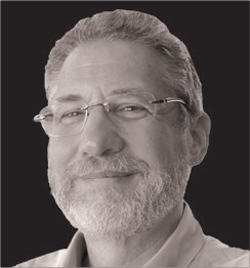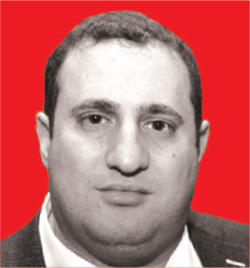Trending
How developers hunt for architects
Builders of everything from high-end condo towers to affordable rentals want designers with vision and practicality

Like fashion designers, architects go in and out of vogue — but a building has a much longer life span than a pair of jeans.
“Arguably, architecture is an art form; however, unlike most art, you have to live in it,” said Izak Senbahar, the president of Alexico Group, which developed 56 Leonard and 165 Charles Street in Manhattan, among other luxury condominium projects.
When developers devote millions of dollars to and spend years of planning and construction on a project, the importance of picking an architect can’t be overstated. Selection strategies vary, from organizing a rigorous interview process and taking obsessive site walks to hiring a verified historian or external consultants. And the finished product can spell disaster or seal the deal for a best-selling building, especially when it comes to attracting potential condo buyers or apartment renters.
During the development boom, New York City saw an influx of both condo and rental projects. From Jan. 1, 2012, to Jan. 31, 2018, the city’s top 30 most active architects worked on roughly 78.8 million square feet of residential projects across the five boroughs, according to public filings analyzed by The Real Deal.
But, alas, there’s no hard-and-fast rule about how to determine good taste. TRD interviewed three veteran residential developers — one known for making Leonard Street synonymous with luxury, another acclaimed for affordable housing and a third who often takes on historic renovations — to see how they choose their comrades in arms.

Izak Senbahar
Izak Senbahar
President, Alexico Group
What goes through your mind when you’re hiring an architect? You have to choose an architect with talent and creativity who is also pragmatic, rational and sensible to the needs of a logistically tight arena like Manhattan. Arguably, architecture is an art form; however, unlike most art, you have to live in it. You want to create an experience for your buyers that has everything they need and then some, but, at the end of the day, the business is to create a product. The architect happens to be one element of that equation.
How do you decide who to hire? We go visit them. We want to see how they work in their own environment and what kind of an office we are dealing with. One of the main questions is whether the back office is large enough. And personalities are very important. Is this somebody you can get along with? You’re going to be dealing with this architect [for] three, four, five, six years — sometimes more — and your office and his or her office will be in constant dialogue.
Does the architect come before the design? For example, with 56 Leonard Street, did you choose Herzog & de Meuron before you saw their design? Yes, I hired them, and then we designed the building.
It seems as though Alexico Group only recently began emphasizing its projects’ architects. Why? In the old ages — 25 or 35 years ago — you would see Fortune 500 companies building headquarters, and those guys paid attention to architecture and could spend the money. Most residential developers didn’t build great architecture until maybe 15 years ago because of the extra expense. The norm was [that] people would buy apartments for their layout, size, light and air — the outside really didn’t matter that much. But then the Richard Meier glass buildings and others came into the picture. Now it’s a different ball game. Everybody wants to build [something] architecturally important.
You lived through the change. What was that like? Banks weren’t used to the extra expense. Financing [for 165 Charles Street], designed by Richard Meier, was tough because banks would think you’re being too artistic and that it’s not 100 percent business — well-designed buildings cost more and the only justification was better architecture. The question was would people pay more for better architecture? That’s the model today, but before, we had to put more equity in and put our money where our mouths were. We took the risk, it paid off, and here we are.

Jonathan Rose
Jonathan Rose
President, Jonathan Rose Companies
How do you select an architect? We always try to hire an architect who is deeply experienced in designing the project content. It’s important that they be from the city we’re building in. We work all over the country, and we will not bring a New York architect to Atlanta or an Atlanta architect to New York. We want people who really understand the needs of and how local agencies work.
How do you choose between design proposals for your buildings? I’m not such a big fan of the idea that an architect presents three proposals and then you pick one. If there really are three or four different concepts, that’s great, but I often find that they’re contrived. I’d rather we start with an idea and then stabilize the design fairly early, because what drives everybody nuts is when you make a lot of changes to a building.
Do you work with external consultants, sometimes known as building committees, to help you judge your taste in architecture? We do two kinds of work: We work for ourselves, and we also have an owners’ representative group that works with not-for-profits to help them build buildings. Internally, we don’t have a building committee, but when we work with not-for-profits, they almost always have a committee.
What is that process like? Can you see their contributions? I started my own company in 1989 and from early on, working with great architects was important to me. But the big transformation came in 2003, when our company became the owners’ representative for Cooper Union, which wanted to build a new academic building. They had a fantastic building committee and an independent architecture selection committee, which included art patron Agnes Gund and Harry Cobb of Pei Cobb Freed & Partners. Our job was to help this committee winnow through a list of 150 architects, and it exposed me to the broadest range of architecture I’d ever seen.
Do you think architecture contributes to the success of your buildings? The design is essential. Our work is building affordable and mixed-income housing, and our underlying goal is to create communities and opportunities. So that’s a really important part of the programming and it has to do with how supportive it is of the health and well-being and future of our residents. What we’ve also found is that when a building is externally beautiful, it gives pride to the residents. You see that in Via Verde in the Bronx. The attractiveness of the design is not because we spent more money; it’s because we had great architects.

Michael Stern
Michael Stern
CEO, JDS Development
You hired an architectural historian to work at your firm. Why? We do a lot of projects that have a landmarked or historic component. Architectural historian Marci Clark really helps us to identify the fabric and the DNA of what was there so that we can properly tell the story of what’s coming. In addition to [conducting] historical research, she really helps make sure that everything we do has design integrity, isn’t arbitrary and, you know, overly trendy.
You’re worried about being overly trendy? I’ll give you a great example. At 111 West 57th Street, we’re designing a very tall tower that’s integrated with a wonderful landmark. We wanted to do a tower that was complementary to the landmark but wouldn’t overwhelm and mimic it — that’s a hard balance to find. We don’t want to make it look like a spaceship landed in a neighborhood. Very often, the past informs the right thing to do in the future, so to have somebody who can tell us why and how a neighborhood, or a building, came about in the first place is really helpful.
How did the idea to look into the architectural history come about? The initial idea for trying to look into that old history came from myself and Shaun Osher [founder of CORE, which handled sales at Walker Tower]. We were in a room brainstorming saying, “Hey, what are we going to do to sell this Verizon building and not have it referred to as the Verizon building?”
Does history actually help you sell units? Absolutely. If you look back at Walker Tower, no one had ever heard of Ralph Walker, the architect. He was forgotten. He did phenomenally worthy work but really hadn’t been noticed. Marci developed an exhibit and a book that really brought his work to the forefront and created the architectural pedigree that contributed to the success of Walker Tower and later the Stella Tower. Buyers understood there was integrity to the work and that it was worth paying a premium for. Other developers leveraged off our work too; Ben Shaoul did a building in Tribeca that he actually called Ralph Walker Tribeca, which would have been an unfathomable name before Marci exposed his work.



